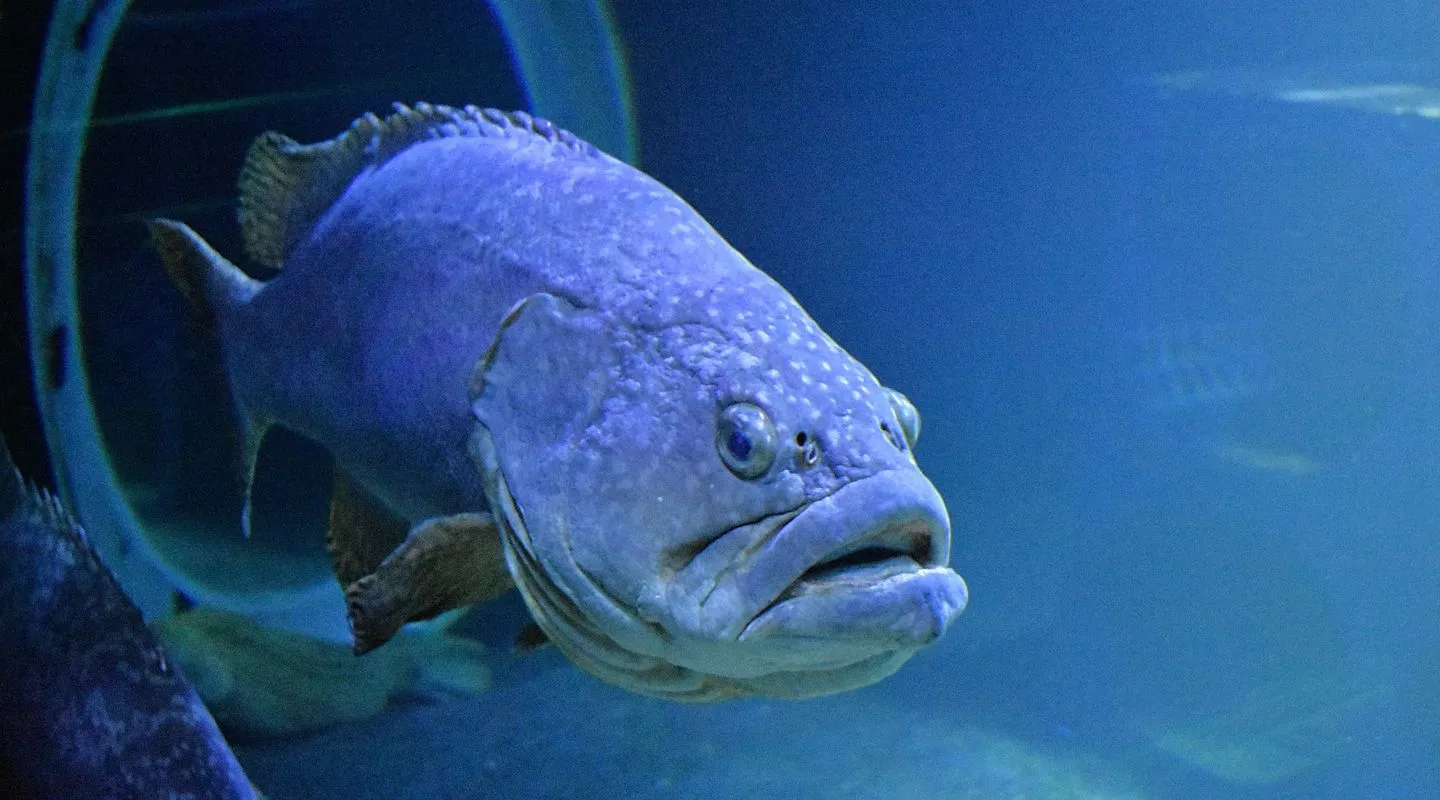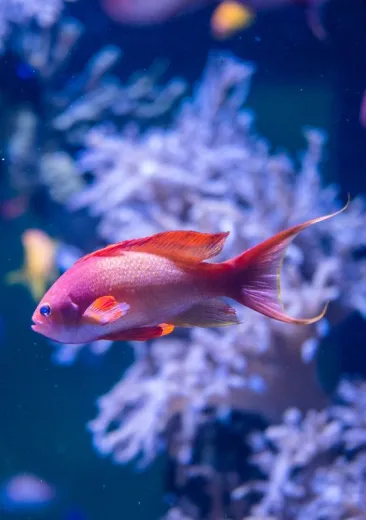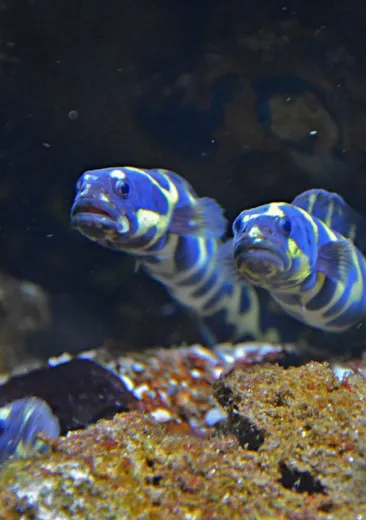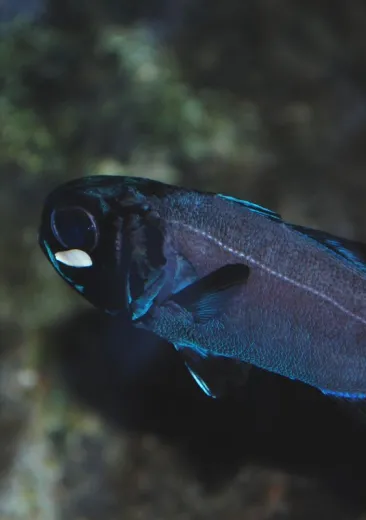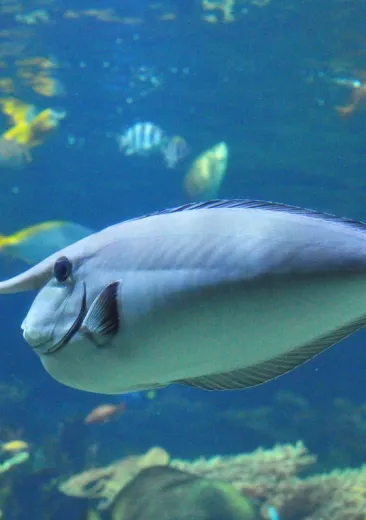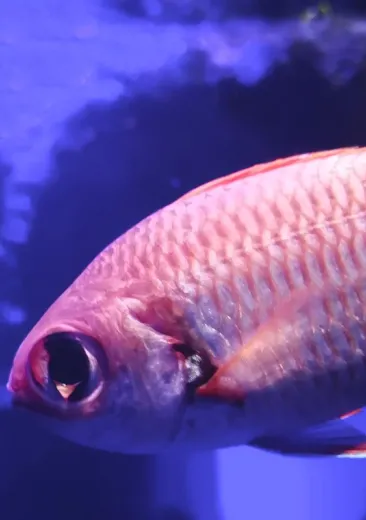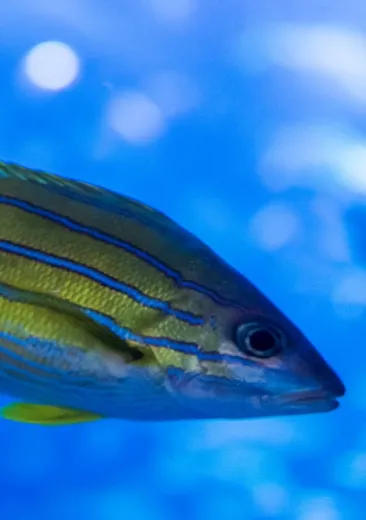The giant grouper feeds on fish, sometimes even small sharks, crustaceans such as lobsters or even young sea turtles.

Identity card
Giant Grouper
- Scientific name:
- Epinephelus lanceolatus
- Family:
- Serranidae -Epinephelidae
- Class:
- Actinopterygii
- Phylum:
- Chordata
- Year of description:
- Bloch, 1790
- IUCN Status:
- Data Deficient
- Distribution:
-
Red Sea, Indian Ocean, Western Pacific as far as the Hawaiian Islands and Pitcairn, south of Japan to Australia.
- Habitat:
-
It is found in the open sea around artificial reefs. This species is mostly sedentary and stays close to the coral reefs
- Size:
It can measure up to 2.70 metres and weigh 300 kg.
- Diet:
-
The giant grouper feeds on fish, sometimes even small sharks, crustaceans such as lobsters or even young sea turtles.
